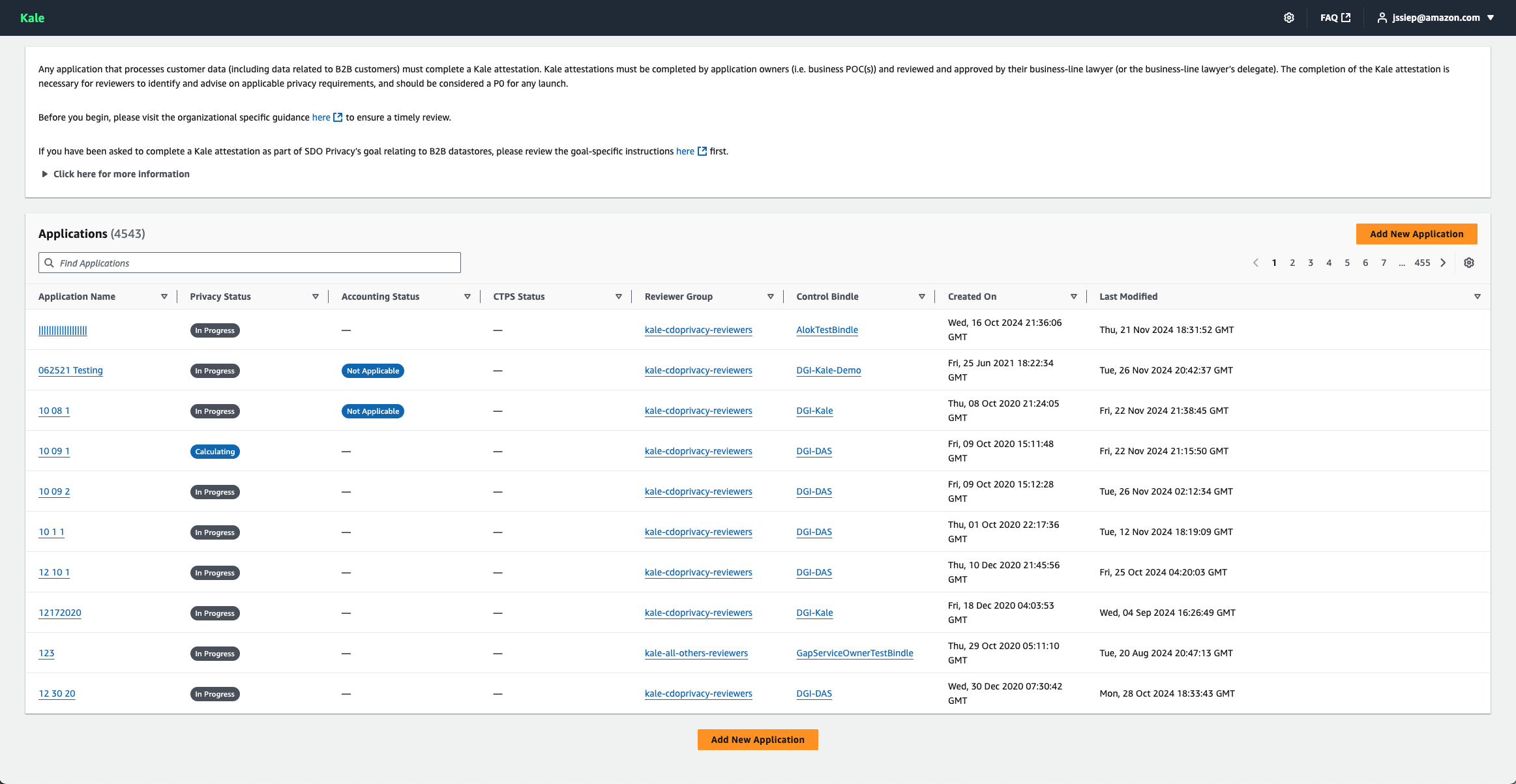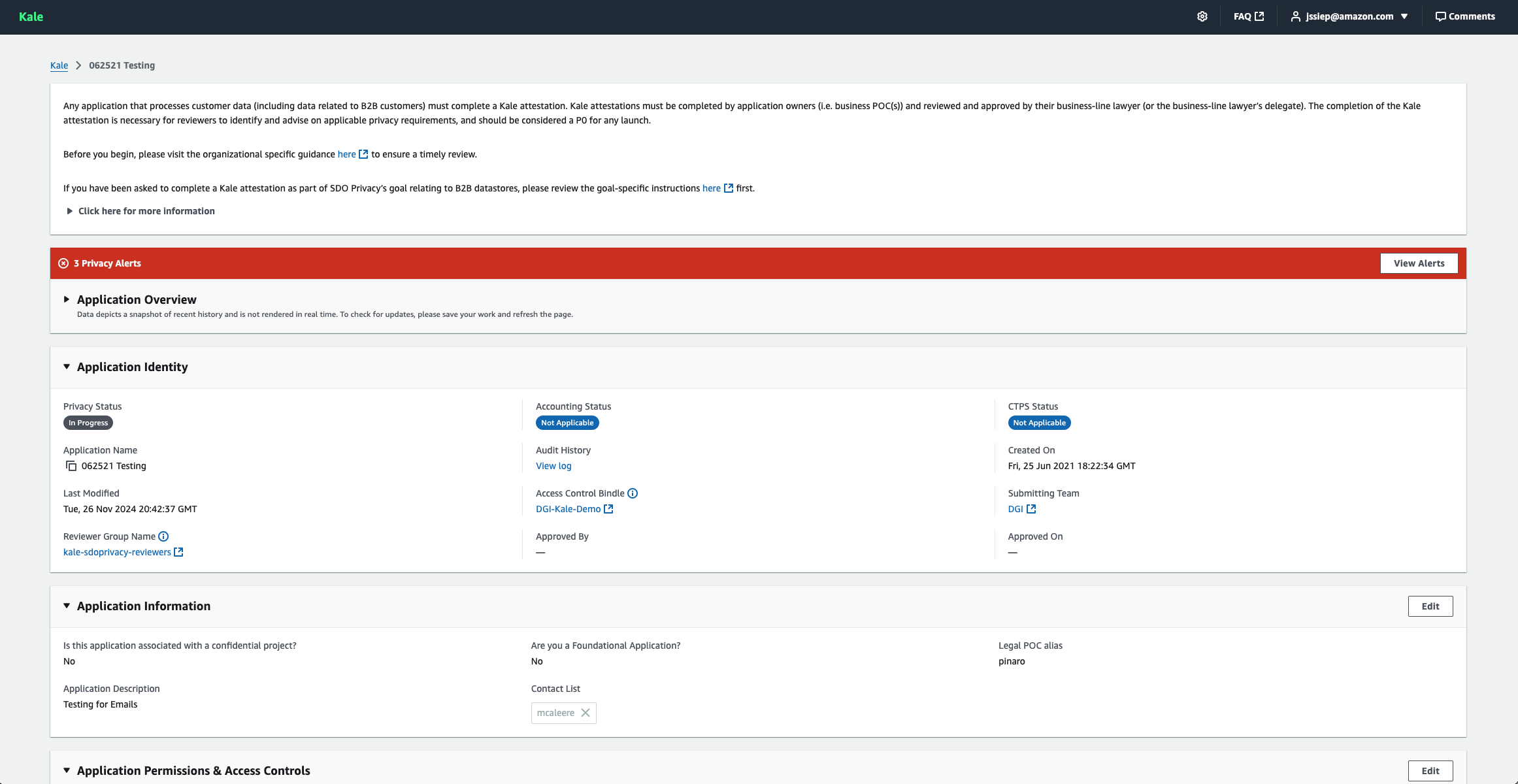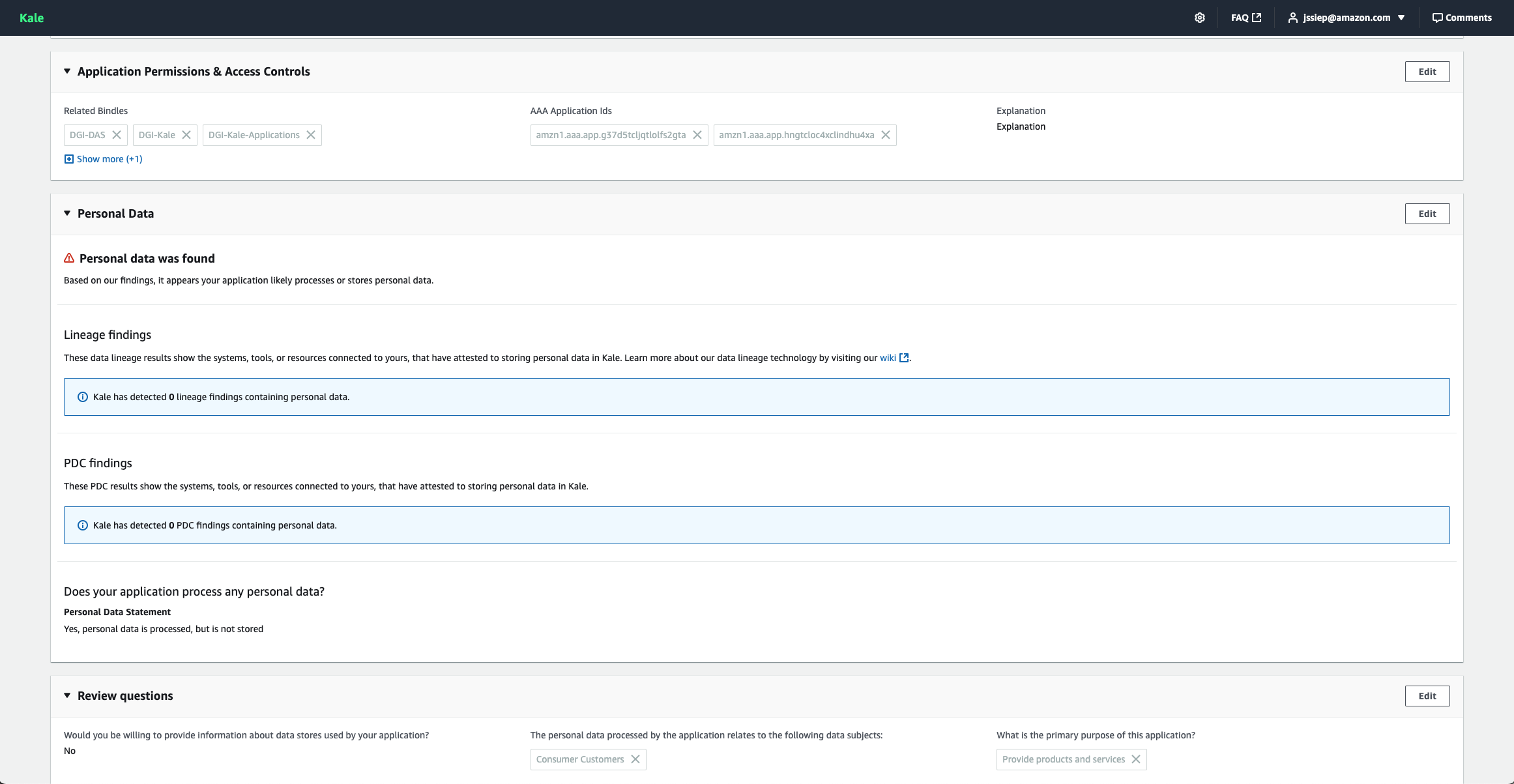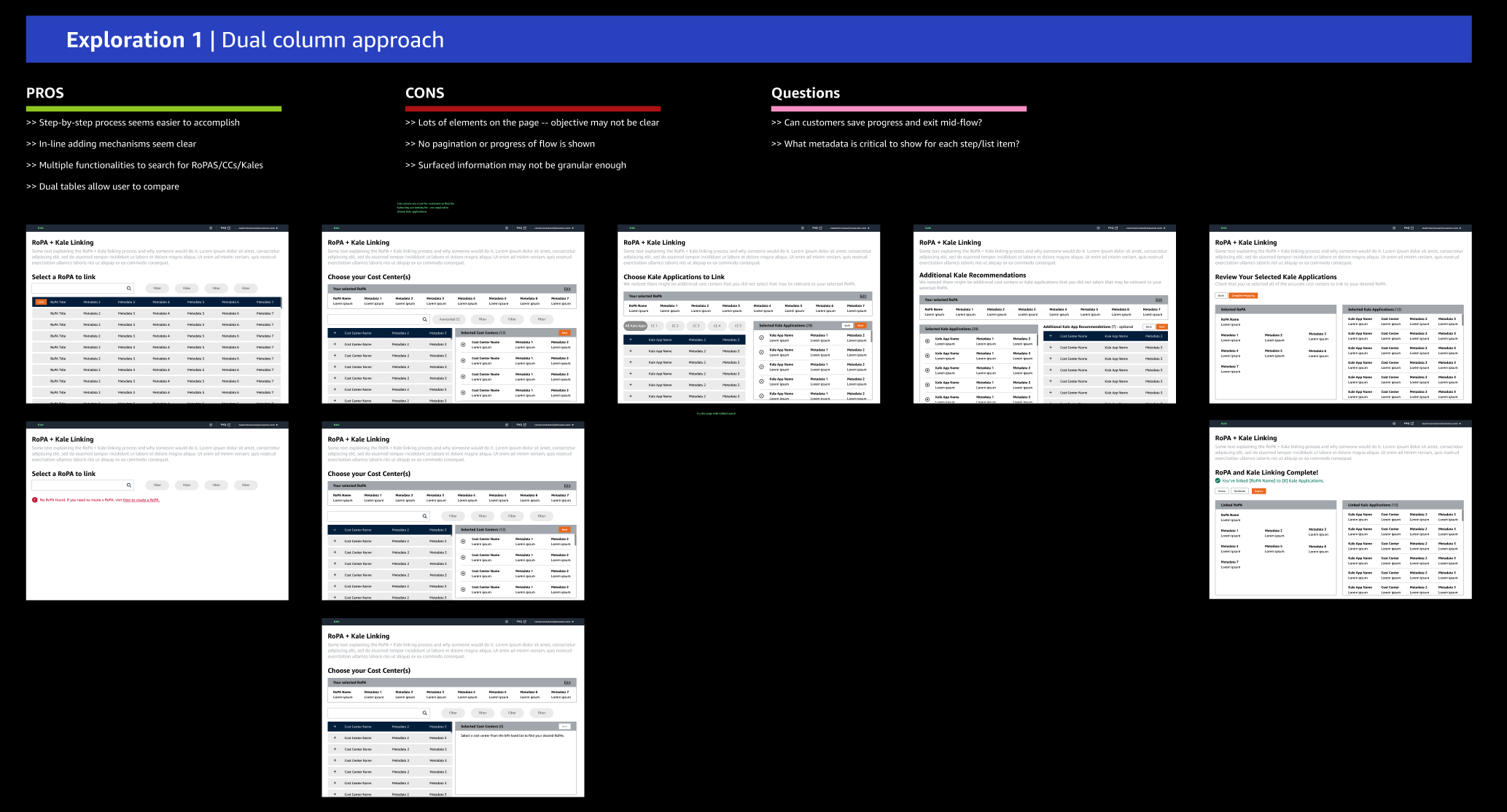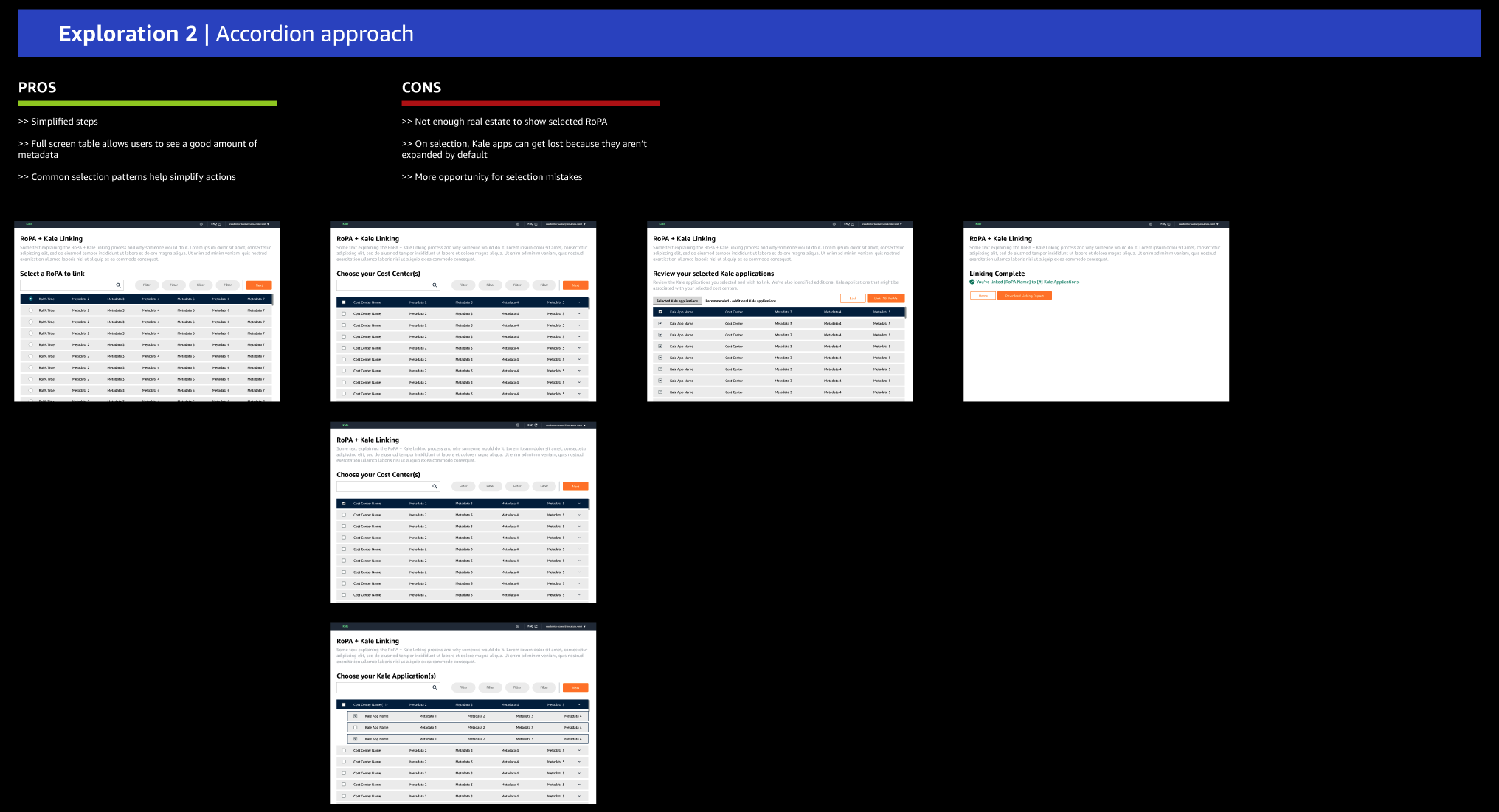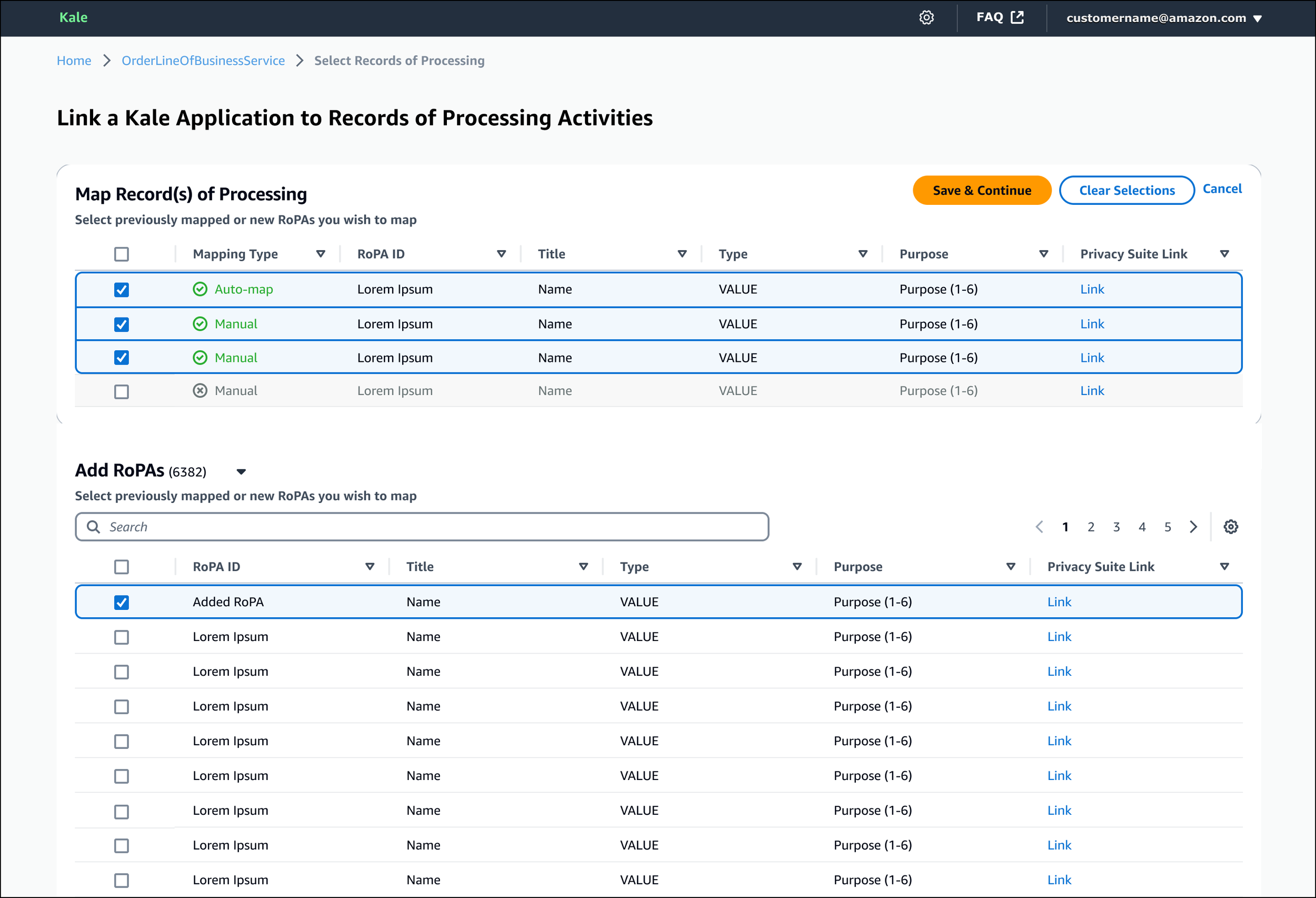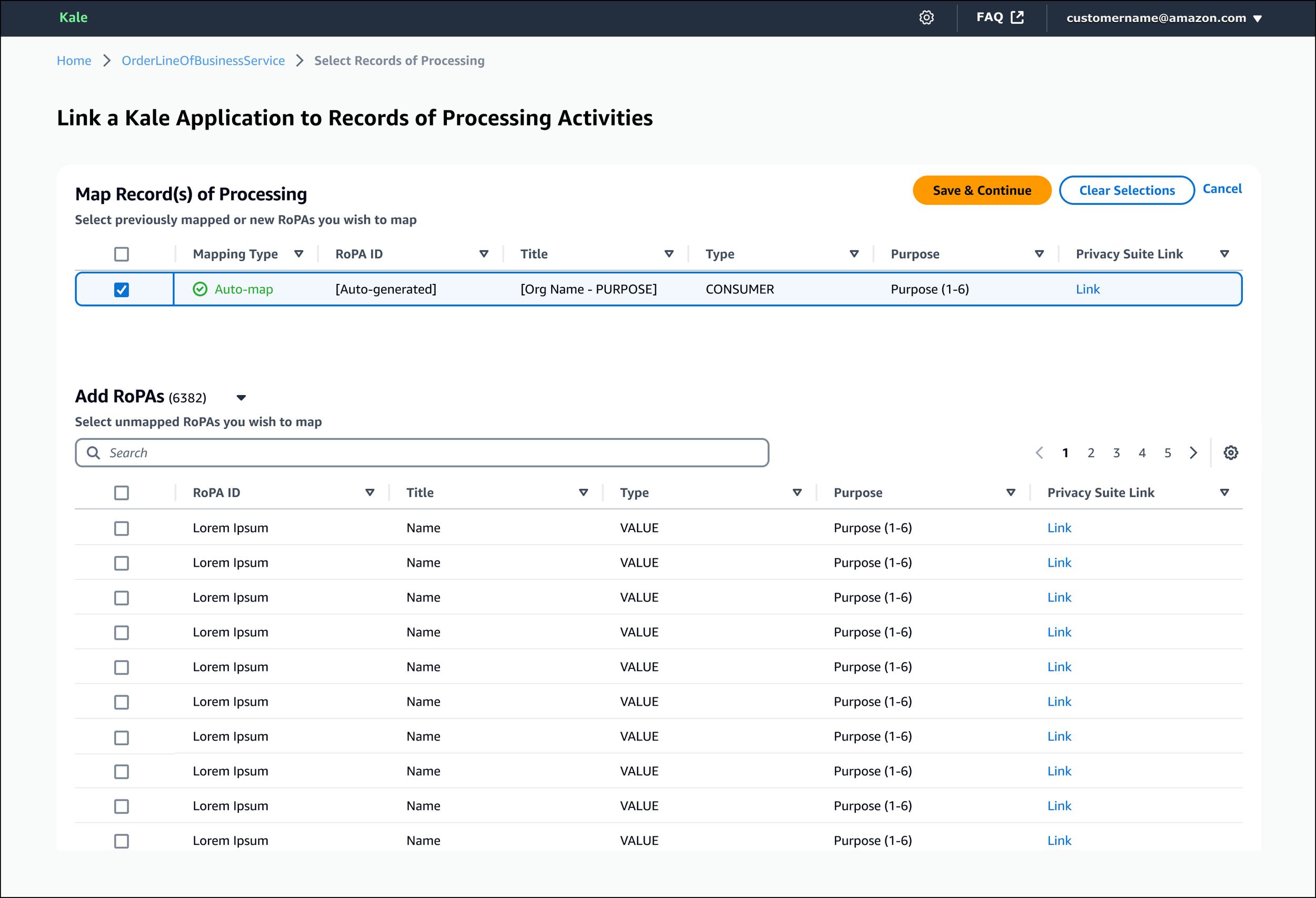Kale – a healthy, nutritious tool for Amazon’s Privacy teams to report and track customer data usage and storage.
Customer Problem
Internal Amazon legal stakeholders are required to submit a “Kale” application for a Privacy Review anytime their product or service is utilizing customer data. They are also required to submit a separate “Record of Processing Activities (RoPA)” that details further information about the customer data being processed, such as purpose for collection, business unit, team and a link to further Privacy tools.
Today, there is no way for the Kale applications to be linked to the related RoPAs, creating inconsistency, redundancy, and increased friction for customers who are responsible for the reporting of customer data.
Lead designer
Partnered with product and engineering stakeholders to determine requirements and timeline
My Role
Educator
This was the first time the team has ever partnered with UX, so I was responsible for introducing evangelizing the UX working process across teams
Instant-Expert
I had just transitioned to the team, and had to onboard and deliver designs in just 6 weeks for development
Existing CX
1.1 | Kale Home Page
Customer selects a Kale application
1.2 | Kale Application Landing Page
Customer sees information about Kale application
1.3 | Kale Application Page
Customer scrolls to see more information about what data lives in Kale application
1.5 | End of Kale Application & Submit
Customer scrolls to bottom of Kale application page and can submit their application for Privacy Review
1.4 | Data Tables on Kale Application Page
Customer sees all data tables and fields associated with customer data
Requirements
Customers must be able to link a single Kale application to many RoPAs. (1 : many relationship)
All Kale applications must be linked to at least one RoPA.
Customers must be able to search RoPAs by ID, purpose or title/description.
There must be a way to for customers to see any changes that have been made to the existing mapping (i.e. an audit trail).
Discovery
User Flow
Spent a few days at an offsite with product and engineering parters to map out ideal customer journey.
Technical Flow
Worked with product and engineering to create a backend technical diagram to map out the various platforms involved.
Explorations
High-level Feedback
There needs to be some sort of progress indicator to show customer where they are in flow
Stakeholders liked the concept of a “cart” for customers to review all of their selections
Review step is definitely necessary
Need to hone in on the exact data fields that customers prioritize/search for the most
2-column design creates restricted real estate and hinders the amount of info to show
High-level Feedback
Full-screen table is a lot more simple and easy to parse
Common selection patterns create clear understanding of customer action
On selection, other rows can get lost off-screen because they aren’t expanded by default
Key decisions based on explorations
Have table be full-width to maximize real estate for metadata
Instead of a “cart” view, create a split-level view of tables so customers can see their selected RoPAs as well as all existing RoPAs
Ensure there is a progress indicator so customers can be aware how many steps are left in the workflow
Have two states of each Kale selection: Manually Mapped & Auto-Mapped
Final Designs
1.1 | RoPA Linking Igress
Once a customer selects a Kale application, they will have an ingress to either edit existing linked RoPAs, or link a RoPA if there are none already.
1.4 | Unlinking a RoPA
To remove a linked RoPA, the customer can simply uncheck the RoPA. The state of the unlinked RoPA will then change to look “disabled”, indicating it will no longer be linked.
1.2 | RoPA Selection Page
Customers can see pre-existing auto-mapped or manually mapped RoPAs.
1.5 | Shell RoPA
If a customer cannot find the correct RoPA, we have created a generic “shell” RoPA that will be pre-automapped so customers can temporarily link to that RoPA.
1.3 | Adding Additional RoPA
Customers can check any additional RoPA(s) from the table below to link. Once selected, the RoPA will be appended to the top table with an indicator it has been added.
1.6 | Review & Finish
When a customer is finished selecting the RoPAs, they will see a summary of the changes they’ve made (both additions and removals of the RoPAs) and will be prompted to finalize their changes. They will also be required to choose a reason for updating the linkings.
Next Steps
Beta test & collect feedback
The feature is currently in Beta with our internal customers, and we are collecting feedback to help iterate on the next update to the design.
Design a more detailed audit log
While customers can see the changes they’ve made as they finish their linking, the concept of seeing all changes, when they were made, and who made them, became out of scope for MVP. This is a feature we plan to follow up with.
Conduct broad assessment of Privacy tools
This feature has been desperately awaited by our internal customers, however, priorities seem to be shifting from a leadership perspective, and there is appetite to reimagine the suite of tools our Privacy stakeholders and customers utilize on a daily basis.
Learnings
Rely on the customer to tell you exactly what they need.
Much of this project was defined by needs discovered by the customers. We were able to work closely with them to bounce ideas off of and understand what would be most valuable to them The customers’ feedback directly shaped what we planned to ship for MVP.
When things are ambiguous, take a step back to understand the problem.
Because I was a new addition to the team, owning a completely new space with a very fast expected turnaround, I knew I had to become familiar with the space as soon as possible. Not only was spending time diagramming the experience valuable for me, but my team were able to discover opportunities for optimization and simplification by doing so.
Internal tools are customer-facing, and have an equally sizable impact.
Spending a lot of time working of consumer-facing products and having to jump directly into designing an internal tool, I really had to make a mindset shift. Through this work, I learned the impact can be just as valuable and lucrative for the business by making internal employees’ jobs easier and more efficient. It also allows us to take risks and be more creative in our solutions because the customers are more adaptable and eager to share feedback.
